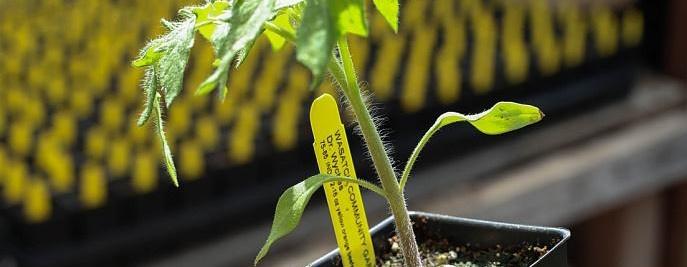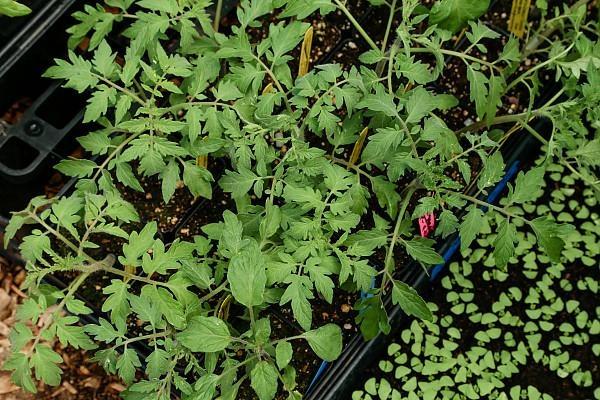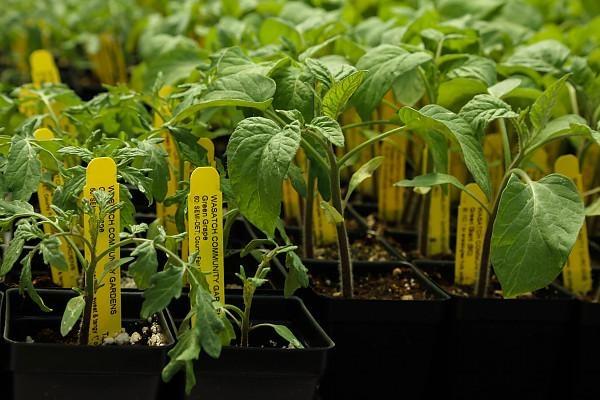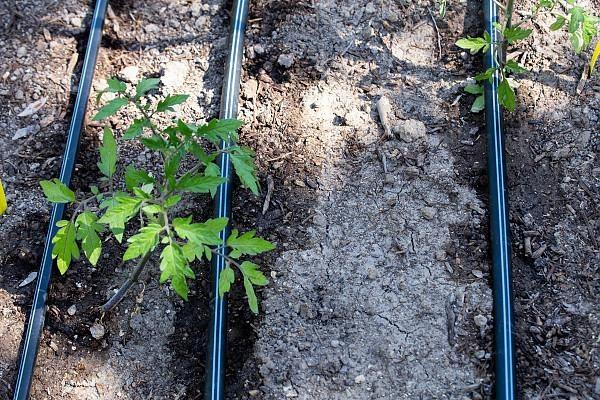Growing Perfect Tomatoes Part 1


It’s plant sale season! It’s time to head down to your local nursery or hit your favorite plant sale and get your tomatoes.
But, choosing the right tomatoes becomes overwhelming when there are hundreds of varieties and what appears to be endless flats of waving tomatoes saying “look at me.”
We reached out to two Wasatch Community Garden experts to find out how to choose the right starts, the best practices for getting your starts in the ground, and what issues, problems, and diseases to watch for as your tomato plants grow. Our experts are Marybeth Janrich, Community Education Director, and James Loomis, Director of the Green Team Garden.
Before we jump into choosing tomato starts, there are a couple of important gardening concepts that we picked up during our interviews with James and Marybeth:
“The best fertilizer is the gardener's shadow.”
This popular gardening maxim was mentioned by both Marybeth and James during the course of their interviews. So, what does it mean? If you plan to spend time in your garden every morning or evening you will catch issues and diseases right as they start. You’ll know your soil and its conditions. Additionally, you’ll know your watering cycle and if your plants are happy, and you’ll be able to nip those suckers (in the bud) before they get out of control (explained in the second part of this blog).
Best gardening practices will result in happy, abundant plants with fewer problems.
Marybeth said it best.
"It’s just like with human health—so washing your hands, getting enough exercise, getting proper sleep, eating healthy. The equivalent in the plant world is not planting your tomatoes too close together, understanding how to prune them properly, having the right nutrition in your soil, the right drainage. So, it’s these preventative practices that will help eliminate problems in the future."
- Marybeth Janerich, Wasatch Community Gardens
Start with good, healthy soil, a regular watering schedule, and good lighting conditions. These basics and other proper care will ensure your plants are on their way to an abundant growing season.

There are two types of tomato plants that all varieties fall under...
Determinate - Tomatoes will grow to a certain height and then stop growing. They usually grow all their fruit at once and then will be (pretty much) done growing tomatoes.
If you don’t want to bother with large, trellising structures or have limited space, then you may want to choose tomato varieties that are determinate.
Indeterminate - Tomatoes will continuously grow and produce fruit throughout the season. They can easily grow to be 10 feet in height. You’ll need to have the proper trellising to support them. Heirloom tomatoes, for example, are generally indeterminate.

Before planting your tomatoes, it’s best to acclimate them to the environment first so they can get used to the intense sun, wind, and other elements. Properly hardening off your seedlings prevents them from going into shock and dying.
James recommends taking them out in the morning so they can experience that early morning sun and be in the shade by noon. If your overnight temperatures will get below 50 degrees you’ll want to bring them in in the evening. You should do this for at least 3 or 4 days before transplanting them into your garden.
All of those tiny, little hairs you see on the main stem of the plant have the potential to turn into roots! If you are going to bury the plant up to its topmost leaves, you’ll want to carefully pinch or break off the leaves at the base of the crown and not bury them.

Tomatoes are unique in the sense that you can bury the crown of the plant, only leaving the top part with the thicker growth of leaves above the ground.
Tomatoes love to be warm and they love the sun. So, they aren’t too happy about being put in cold soil. A soil thermometer can come in handy when digging the hole to put your tomato in, you'll want to make sure the base of the hole isn’t below 50 degrees. This cold environment will shock the plant and weaken it.
If you don't have a soil thermometer and you think your soil might be below 50 degrees, then don’t go deep and just plant your tomato at the base of the crown at the soil level.

This is an interesting technique James demonstrates in the video.
If your soil is too cold you may want to try the trench method. You simply dig a large, shallow hole that’s wide enough to amply cover your tomato crown. Lay your start on its side in the trench and bury! The top of the plant should turn upright towards the sun in a matter of hours or within a day.
This method allows all of those little hairs to become roots without shocking and stressing the start.
James recommends determinate tomatoes about two feet apart while indeterminate should be about two and a half to three feet apart.
When your plants have proper spacing there’s less chance for disease and pests to spread and the more space for your plants to spread, get proper sun and airflow. It also helps you prune excess growth and harvest your fruits if you’re not fighting with entangled, overcrowded vines to reach your tomatoes.
A common mistake many gardeners make is planting their plants too close together. This is easy to do when your starts are small!

If you don’t have a drip irrigation system installed, it’s best to water your plants by hand with the hose on low.
Try to avoid a sprinkler system as most garden plants don’t appreciate water on their leaves and fruits. The access water on the plant can be an invitation to pests and help spread diseases.

Up next is our interview with Marybeth Janerich, Wasatch Community Gardens Community Education Director, who goes over some common tomato problems, diseases, and other issues, and what to do!
Marybeth teaches many of WCG's gardening courses and having personally grown 150 different varieties, she knows a lot about tomatoes.
If you live in Utah and have a garden or garden project that you'd like to be featured on Modern Gardener, click here!